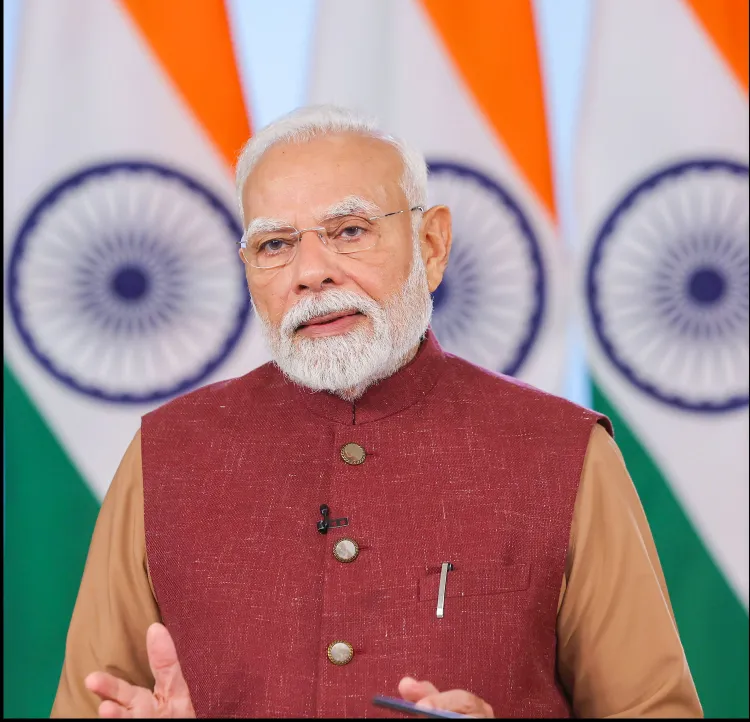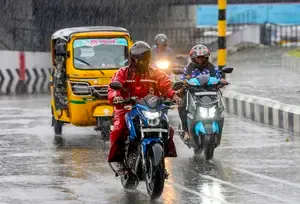How Did PM Modi’s Eleven-Year Tenure Transform Indian Governance?

Synopsis
Key Takeaways
- Extended tenure: Modi surpasses Indira Gandhi's record.
- Economic reforms: Introduction of GST and initiatives like Make in India.
- Digital transformation: Launch of Digital India and UPI revolution.
- Infrastructure growth: Major projects like Bharatmala and Sagarmala.
- Social welfare initiatives: Expansion of Ayushman Bharat and Ujjwala Yojana.
New Delhi, July 25 (NationPress) Prime Minister Narendra Modi on Friday achieved a significant milestone in India’s political narrative by eclipsing Indira Gandhi’s uninterrupted tenure, now holding the position of the second-longest-serving Prime Minister in the nation’s history.
With a remarkable 4,078 days in office within a single term, PM Modi’s eleven-year leadership has not only demonstrated exceptional duration but also instigated a profound transformation across various sectors of national life - economy, infrastructure, diplomacy, and social welfare.
His rise as a pivotal political figure from the post-Independence generation is particularly noteworthy, being the first Prime Minister born after 1947 and the longest-serving leader from a non-Hindi-speaking state.
Since his stunning electoral victory in 2014, PM Modi has launched extensive reforms anchored in governance and economic growth.
The introduction of the Goods and Services Tax in 2017 represented a groundbreaking overhaul of India’s tax structure, unifying a previously fragmented system to facilitate smoother business operations across states.
Accompanying this reform was a strong push for domestic manufacturing, with initiatives like “Make in India” and “Atmanirbhar Bharat” aimed at enhancing production capabilities, diminishing reliance on imports, and fostering a self-sufficient economic framework.
One of PM Modi’s most significant contributions has been in the sphere of digital governance.
Through the Digital India initiative, the relationship between citizens and the government has been redefined, with services moving online and transparency being heightened.
Systems like UPI have revolutionized payment methods, facilitating billions of transactions and positioning India as a leader in financial technology.
The Jan Dhan Yojana further broadened banking access, incorporating millions of previously unbanked citizens into the formal financial framework. These initiatives empowered grassroots communities and established a foundation for direct benefit transfers, significantly reducing leaks in welfare programs.
Infrastructure advancements under PM Modi are another hallmark of his administration.
Road construction has surged, and flagship initiatives such as “Bharatmala” and “Sagarmala” have prioritized connectivity in the development agenda.
Air travel became more attainable through the UDAN scheme, while rail modernization took shape with Vande Bharat trains — epitomizing speed, efficiency, and Indian ingenuity.
In terms of defense and national security, PM Modi has overseen a more assertive and globally prominent India. From the retaliatory actions in Uri and Balakot to reforming defense procurement and exports, his government shifted the narrative from strategic caution to proactive measures.
The Agnipath Scheme exemplifies this new approach, focusing on rejuvenating military recruitment to attract younger, more agile personnel.
Social welfare has seen notable enhancements, with Ayushman Bharat providing health coverage to over 55 crore citizens, and the Pradhan Mantri Awas Yojana delivering homes to millions in both rural and urban settings.
Ujjwala Yojana has supplied clean cooking fuel to families reliant on harmful biomass, thus alleviating health risks and empowering women within their households.
On the international stage, PM Modi’s foreign policy has underscored strategic autonomy, regional leadership, and global influence.
India hosted the G20 summit in 2023, boosting its status as a critical player in global governance.
His ongoing diplomatic efforts in the UK and Maldives demonstrate continual outreach and negotiations, reinforcing India’s evolving role in the Indo-Pacific region and beyond.
PM Modi’s tenure represents an ambitious reconfiguration of governance and national priorities, characterized by power centralization and charismatic leadership.
His success in securing six consecutive election victories - three each as Chief Minister of Gujarat and Prime Minister - solidifies him as a unique political figure whose electoral success aligns with administrative endurance.
While discussions around institutional checks and democratic transparency persist, his eleven years in office signify a pivotal chapter in India's post-liberalization narrative, one shaped by decisive actions, extensive public engagement, and an enduring connection with a wide electoral base.









